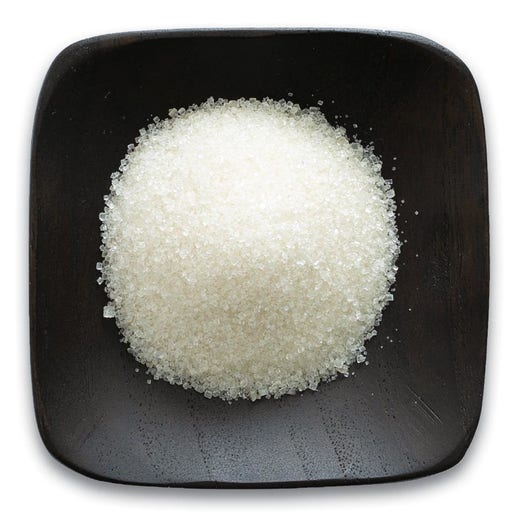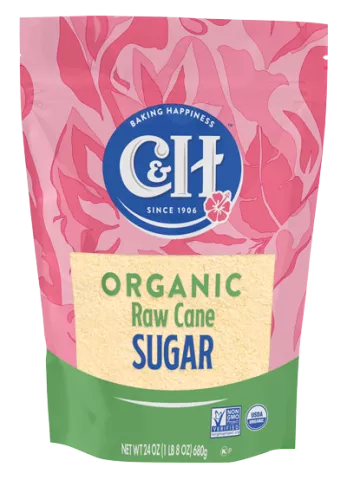Cane Sugar Processing Explained: What Takes Place Inside a Sugar Mill
Cane Sugar Processing Explained: What Takes Place Inside a Sugar Mill
Blog Article
A Comprehensive Guide to the Ecological Effect and Sustainability Practices in Walking Stick Sugar Processing
The ecological effect of walking stick sugar processing presents an intricate selection of difficulties that warrant cautious exam. From soil deterioration and too much water usage to the carbon footprint related to farming and manufacturing, the effects of typical techniques are far-reaching. In contrast, the adoption of ingenious sustainability actions provides a pathway toward much more liable production methods. Recognizing the interplay between these problems is important for stakeholders in the industry. What details practices can be applied to strike a balance between efficiency and environmental stewardship? The solutions lie in a more detailed check out both the obstacles and potential services.
Review of Walking Cane Sugar Processing
Walking stick sugar handling involves a collection of methodical steps that change sugarcane into refined sugar. Originally, harvested sugarcane is transported to refining centers, where it goes through cleansing to remove soil and debris. Following this, the walking stick is crushed to remove juice, which is then cleared up by getting rid of impurities through home heating and the enhancement of lime.
The clarified juice goes through evaporation, where water is removed to concentrate the sugar material. This concentrated syrup is then taken shape through cooling, enabling sugar crystals to create. These crystals are divided from the staying syrup making use of centrifugation, leading to raw sugar. To achieve polished sugar, the raw product goes through additional filtration procedures, which might include filtering and washing to eliminate remaining contaminations and shade.
The last product is then dried out and packaged for circulation. Throughout this entire procedure, maintaining efficiency and high quality control is necessary to make certain the sugar meets industry criteria. Each step in walking stick sugar handling not only contributes to the last item however additionally has effects for resource use and waste generation, setting the phase for conversations on sustainability and environmental impacts linked with sugar production.
Ecological Challenges of Manufacturing
The manufacturing of walking stick sugar offers several considerable ecological obstacles that warrant interest. One main problem is the comprehensive usage of agrochemicals, including plant foods and pesticides, which can lead to soil deterioration, biodiversity loss, and contamination of regional water sources. The drainage from sugarcane areas usually carries these chemicals into close-by communities, disrupting water life and affecting the wellness of areas reliant on these water bodies.
Another challenge is the high power intake connected with sugarcane processing. The boiling and refining phases require significant heat, mainly produced by melting fossil fuels, contributing to greenhouse gas exhausts. In addition, the large land area needed for sugarcane growing can cause deforestation and habitat destruction, further worsening climate change and threatening wildlife.
Moreover, the labor techniques in some areas increase honest concerns, as workers may encounter inadequate working conditions and inadequate salaries. This situation often perpetuates a cycle of destitution in neighborhood neighborhoods. Cane Sugar Processing. Addressing these ecological difficulties is essential for creating a lot more sustainable methods in cane sugar manufacturing, ultimately benefiting both the setting and the communities entailed in this industry
Water and Land Use Influence
Water resources and land use are crucial elements in the cane sugar market that significantly affect the setting. The cultivation of sugarcane needs significant water input, with quotes recommending that it can consume as much as 2,000 litres of water per kilogram of sugar created. This extensive use of water often brings about depletion of regional water sources, impacting not just the sugarcane vineyards yet likewise surrounding communities and areas that rely on the exact same water resources for agriculture and residential usage.

In addition, land use for sugarcane growing can bring about deforestation and the conversion of natural environments right into monoculture plantations. This method diminishes biodiversity, interferes with local environments, and adds to soil deterioration. The growth of sugarcane areas commonly encroaches on valuable agricultural land, creating competition for resources between food and biofuel production.
Sustainable practices, such their website as maximizing watering strategies and applying plant turning, are important to alleviate these effects. By embracing much more efficient water usage and land monitoring approaches, the walking cane sugar market can decrease its ecological impact, making certain an equilibrium between agricultural performance and ecological preservation.
Greenhouse Gas Emissions
Greenhouse gas discharges represent a substantial ecological issue within the cane sugar handling market, especially as agricultural practices increase to satisfy worldwide demand. The farming of sugarcane, a crop that flourishes in exotic climates, counts greatly on synthetic plant foods and chemicals, which contribute to site web laughing gas discharges. In addition, land-use adjustments, consisting of logging for new sugarcane ranches, launch carbon dioxide kept in vegetation and soil.
During processing, energy usage is another major source of greenhouse gas emissions - Cane Sugar Processing. Numerous sugar mills use fossil gas to power equipment and create warmth, causing substantial carbon impacts. Furthermore, the transportation of raw sugarcane and finished products includes layers of exhausts via gas burning in lorries
The collective result of these exhausts aggravates environment adjustment, posturing threats not just to the atmosphere however additionally to the long-lasting feasibility of the market. Stakeholders have to identify the urgent need for extensive techniques that deal with these emissions. This involves assessing current agricultural methods, refining techniques, and transportation systems to identify areas for improvement and reduction. Dealing with greenhouse gas exhausts is vital for promoting a much more sustainable walking stick sugar market in a transforming environment.

Lasting Practices and Innovations
Lasting techniques and developments are increasingly vital in the cane sugar processing sector as stakeholders look for to decrease ecological get more influences while preserving productivity. One considerable innovation is the execution of incorporated plant administration, which optimizes resource usage by integrating soil administration, insect control, and plant rotation techniques. This strategy improves yield while decreasing chemical inputs and protecting dirt wellness.
Furthermore, the fostering of sustainable power sources, such as biomass from sugarcane residues, has actually gained traction - Cane Sugar Processing. By transforming waste items into energy, processing facilities can minimize their dependence on nonrenewable fuel sources, thus reducing greenhouse gas exhausts
Water monitoring practices have additionally seen renovations through the recycling and reusing of water in processing plants, dramatically decreasing freshwater usage. Developments in innovation, such as precision agriculture, allow farmers to keep track of crop health and wellness and resource usage better, making sure lasting farming methods.
Moreover, accreditation programs like Fair Profession and Rain forest Partnership urge eco responsible farming practices and advertise social equity within the supply chain. By welcoming these lasting methods and advancements, the walking stick sugar processing industry can improve its resilience and contribute favorably to environmental stewardship.
Conclusion
The ecological effect of walking stick sugar processing offers considerable challenges, consisting of dirt degradation, high water intake, and greenhouse gas discharges, alongside moral worries associated with labor techniques. Attending to these issues with lasting methods, such as incorporated crop monitoring, eco-friendly energy fostering, and water recycling, is vital. By advertising ecologically liable and socially equitable methods in sugar manufacturing, the industry can alleviate its adverse impacts, ensuring a much more lasting future for both neighborhoods and ecological communities associated with this field.
Cane sugar handling entails a series of methodical actions that transform sugarcane right into polished sugar. Each action in cane sugar processing not only contributes to the final item yet also has implications for source usage and waste generation, setting the stage for conversations on sustainability and ecological impacts connected with sugar manufacturing.
Greenhouse gas emissions represent a substantial environmental concern within the walking stick sugar handling sector, particularly as agricultural methods broaden to fulfill global demand.Sustainable methods and innovations are progressively essential in the cane sugar handling industry as stakeholders seek to minimize environmental impacts while preserving productivity.The environmental influence of cane sugar processing provides substantial challenges, including soil deterioration, high water intake, and greenhouse gas exhausts, along with moral issues connected to labor techniques.
Report this page